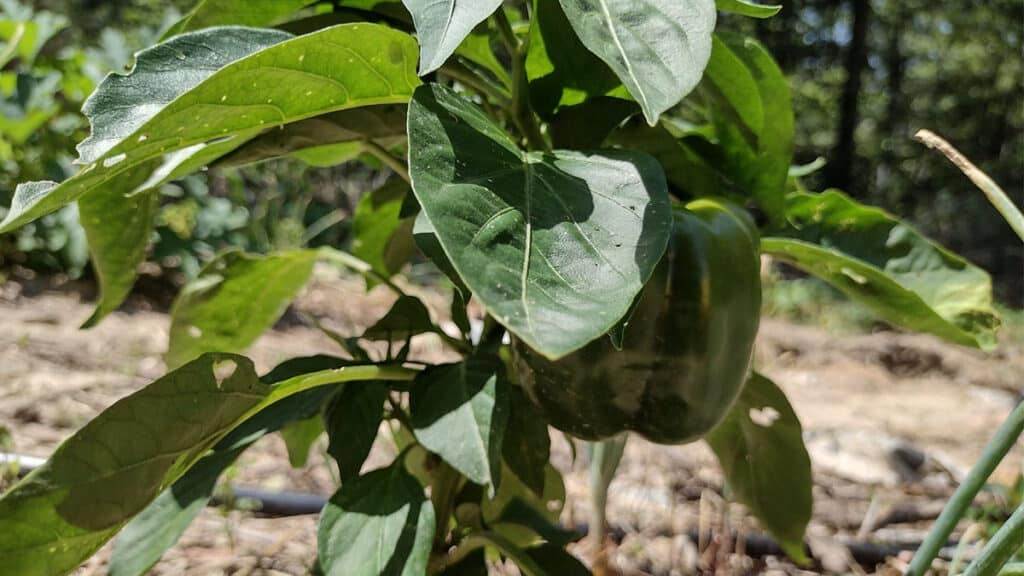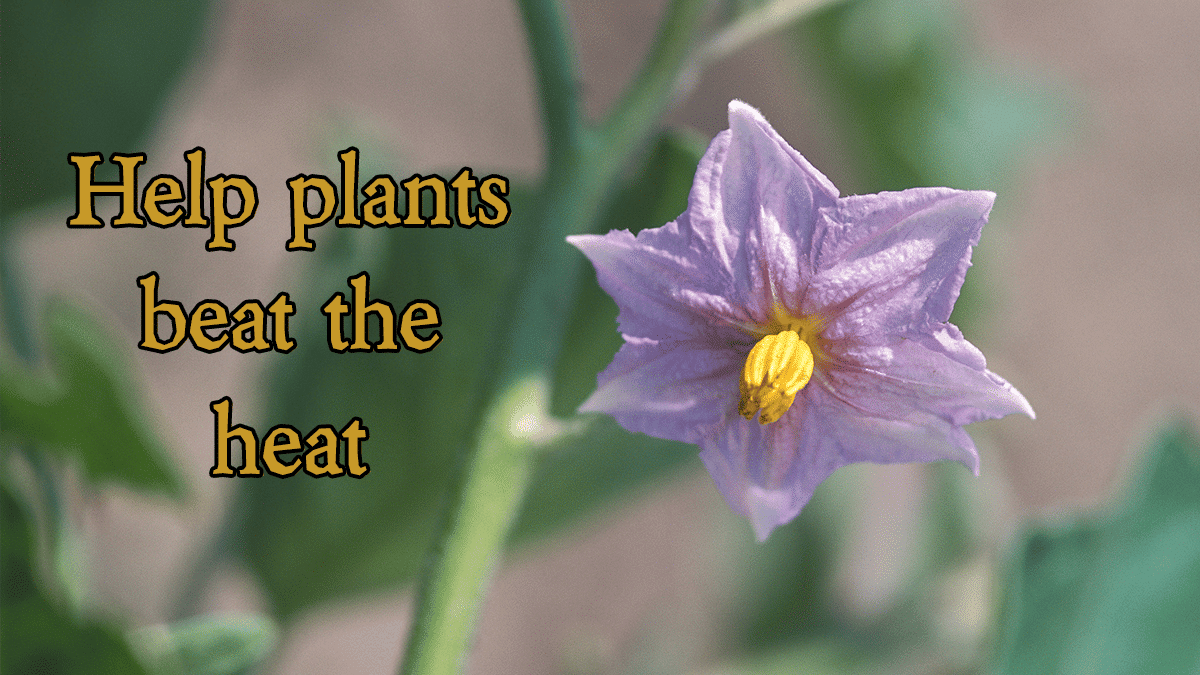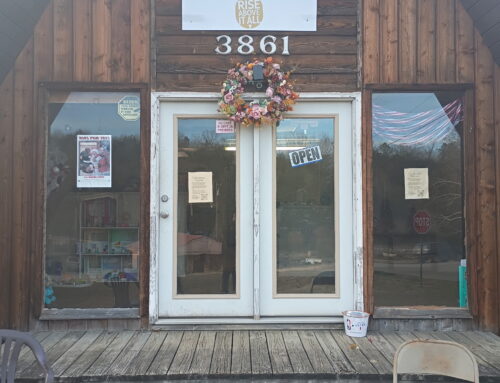There are things you can do to protect the plants you want to keep and assist them through heat waves. Plants swelter right along with us…but here are a few ways to maximize their survival success. Taking a few steps to assist what you grow through the hardest times will help them come through for you later with more beautiful flowers or fruits and veggies!
It’s all about the water. Well, it mostly is. Plants cool them selves through a process called “transpiration”. Transpiration occurs when plants give off moisture through small openings in their leaves. To be able to do this effectively, they need lots of water to pass through just as we do when we sweat.
Inconsistent watering can cause a lot of problems so you’ll want to get on a schedule when the weather is dry! A plant is made up of cell walls which are like little squarish building blocks. When the walls don’t have enough water and it the plant wilts severely, the cell walls lose structural integrity which leaves them more susceptible to damage and disease. Much of the plants energy will be spent attempting to rebuild, which can result in stunted plants which never reach their potential or bearing ability. A carefully-watered plant should be able to weather the heat without damage…although they may appear droopy from time to time…but don’t we all?
It is important to give plants adequate water at the right time to make life easiest for them and keep them healthy.
- The best time of the day to water is early morning. Evaporation is less of a problem early and whatever dew there may be will may have helped condition the soil to “absorb.”
- The best way to water is at or near the surface of the soil keeping plant foliage dry, if possible. Use a slow method allowing plenty of time for absorption. Slow flow, gentle stream is best.
- The best areas to water are the areas beneath the leaves of the plant where water would drip if they’d been rained on. That’s called the “drip line”, clever, huh? The drip line is approximately where the majority of the plant’s roots are concentrated…from there back to the stem. So watering in that area should give the plant it’s best access to water.
- The best amount of water will depend on the plant. Some plants have roots only close to the surface of the soil. You don’t want them to dry out, so it is especially important to water with a gentle, slow stream so the soil is not disturbed. Most plants respond well to long soaks with periods of time allowing excess water to move on so that roots can get air occasionally.
No matter what plants you are watering, it is important to saturate the soil so that it holds water throughout and deeply. Watering slowly and for a longer period may not be a quick, but it will allow the soil to take water deeper so there is a reserve not as easily subjected to evaporation. Evaporation will rob the garden of a lot of moisture is you allow the soil to dry out too completely between waterings.
Another thing to consider is soil caking which occurs when the soil has dried out and the water runs off. Should you discover this is the case, water gently and let it sit, then come back and try again in a little while after the soil has become receptive to the water. You may have to be patient. It does no good to put a ton of water down and have it all run away before the soil can soak it up. If you find that soil is caking in an area of your garden, it’s a sign that you may need to pay it more frequent attention to keep it from completely drying out between waterings.
Important tip: Sometimes you may have to water later in the day but try to avoid the hottest times of the day. Be careful when you begin watering to allow any hot water to leave the hose before watering plants you care about.
Watering later in the day is okay, but keep in mind that you want to give plants time to get dry before evening. Water on leaves at night over time provides an invitation for disease to get a foothold. Plant pests such as slugs thrive on the cooler, moist environment and the cover of darkness that night provides.

We’ll look at some other things that can be done in another article soon.






